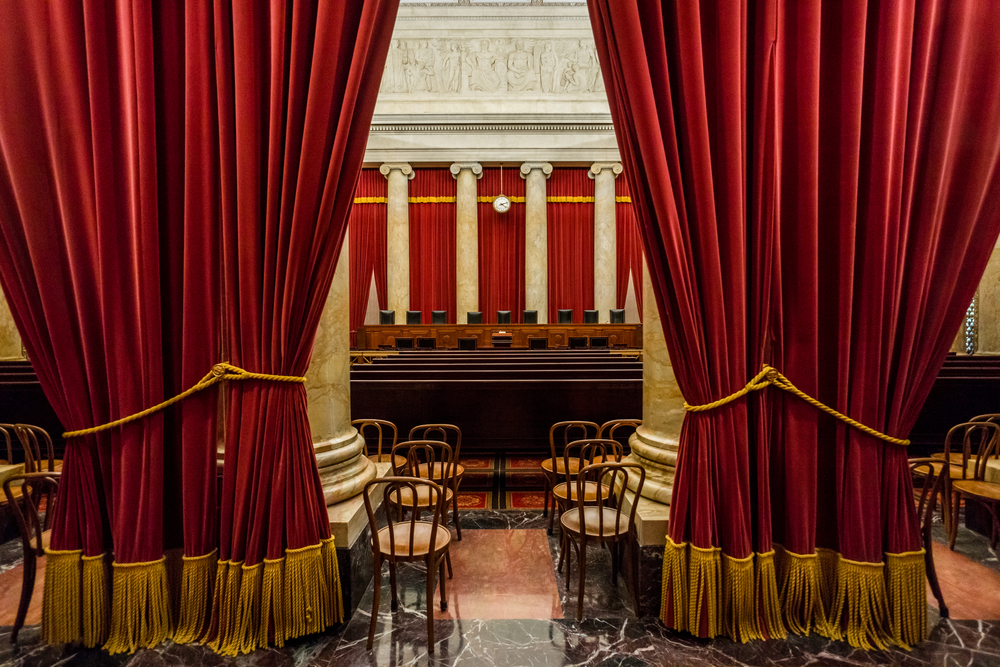Supreme Court term limits have 'considerable, bipartisan support,' SCOTUS commission says

Image from Shutterstock.
A presidential commission studying ideas to change the U.S. Supreme Court indicated continued interest in term limits in revised discussion materials released Thursday.
The Presidential Commission on the Supreme Court of the United States released the materials for use in a meeting Friday, report the New York Times and Reuters.
President Joe Biden had created the commission in April to analyze proposals to reform the high court.
According to one of the documents, the term-limits proposal has “considerable, bipartisan support.” The idea most often proposed is to create staggered 18-year terms for the justices, which would be timed to open up a seat every two years.
The United States is the only major constitutional democracy that has neither a retirement age nor a fixed term limit for its high court justices, the document points out. And in the United States, the average length of justices’ terms has lengthened, from around 15 years until the late 1960s to around 26 years for justices who have left the court since 1970.
“The increasing length of the justices’ terms, in turn, raises the stakes of each nomination,” according to the document.
Proponents argue that giving presidents the ability to nominate justices at regular intervals “would help ensure, at least in the long run, that the Supreme Court does not fall too far out of line with the country’s evolving norms and political values,” the document said.
Opponents, however, say the term-limits proposal reflects the mistaken belief that judges are political actors. It is the role of a judges to apply and develop the law, rather than to decide cases based on the temper of the times, opponents say. Opponents fear that increased turnover could destabilize court doctrine, leading to cycles in which major precedents are discarded and then reinstated.
Members of the commission are divided on whether term limits could be accomplished by statute or whether a constitutional amendment is needed.
One statutory approach would be to provide that, after 18 years of service, a justice becomes a senior justice who no longer participates in the regular work of the Supreme Court. They could sit by designation in the lower courts and could assist the chief justice in administrative duties.
Another approach is for presidents to appoint judges from the lower federal courts to an 18-year Supreme Court term. After that, they would return to their lower court.
There is widespread agreement that Congress has the power to implement another proposal—to expand the size of the Supreme Court, according to a document examining that idea. But “there is profound disagreement over whether court expansion at this moment in time would be wise,” the document said.
Biden will receive the final report next month.
See also:
ABAJournal.com: “Presidential commission divided on Supreme Court expansion, ability of Congress to impose term limits”
Write a letter to the editor, share a story tip or update, or report an error.


